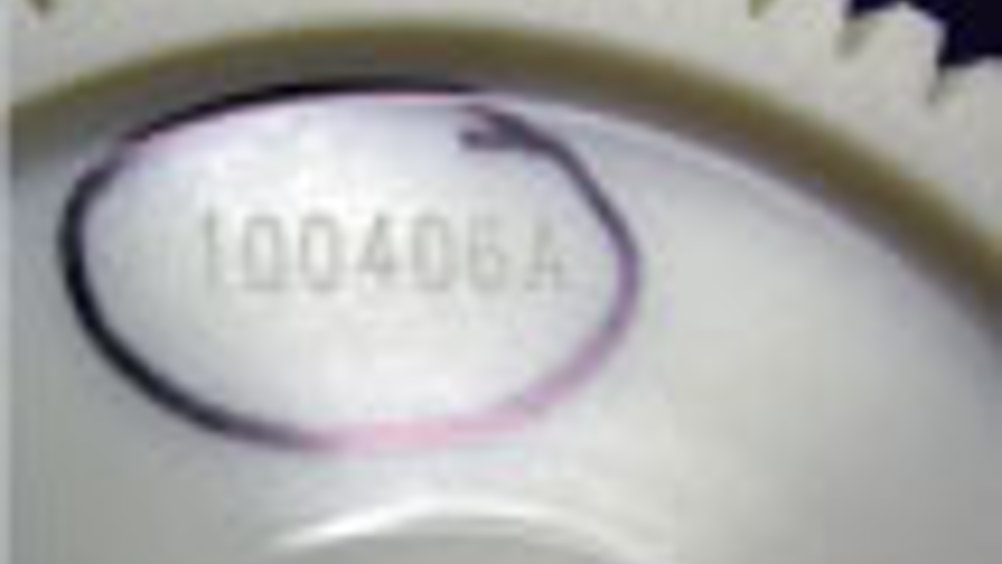Marking Glass-Filled Nylon Components
In marking glass filled nylon components, adding a 20%to 30% glass fill to nylon formulations increases theblend’s stability, rigidity, and wear-resistance. In manycases, the glass fibre also helps to increase contraston plastic materials that are

Marking Glass-Filled Nylon Components
Adding a 20% to 30% glass fill to nylon formulations increases the blend’s stability, rigidity, and wear-resistance. In many cases, the glass fibre also helps to increase contrast on plastic materials that are CO2 laser marked. Although the percentage of glass fill in this nylon gear does not increase mark contrast drastically at low power levels, it still provides an increase in contrast and readability over pure nylon.
The marking set-up consisted of a Synrad sealed CO2 laser coupled to an FH Series marking head and driven by the WinMark Pro laser marking software. A 125 mm focusing lens was installed on the head to obtain a 180-micron (0.007”) spot with a 3 mm (0.118”) depth of focus over the extents of the mark field.
A new drawing in WinMark Pro was opened and created a seven-character part number using Simple, one of WinMark’s twelve built-in stroke fonts, and then set a Text Height value of 4 mm (0.158”). On the Marking tab, a Power was set - duty cycle percentage - corresponding to 25 watts and a Velocity of 508 millimetres per second (20 inches/sec).
Register now to continue reading
Thanks for visiting The Engineer. You’ve now reached your monthly limit of news stories. Register for free to unlock unlimited access to all of our news coverage, as well as premium content including opinion, in-depth features and special reports.
Benefits of registering
-
In-depth insights and coverage of key emerging trends
-
Unrestricted access to special reports throughout the year
-
Daily technology news delivered straight to your inbox










UK Enters ‘Golden Age of Nuclear’
The delay (nearly 8 years) in getting approval for the Rolls-Royce SMR is most worrying. Signifies a torpid and expensive system that is quite onerous...